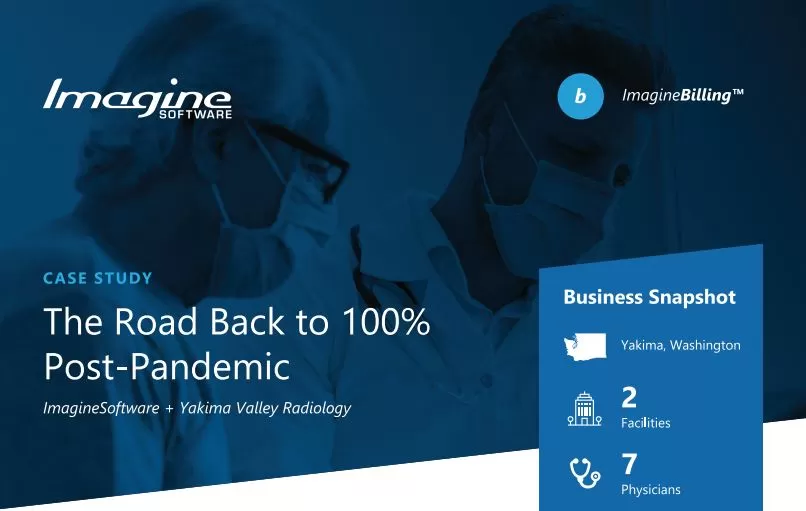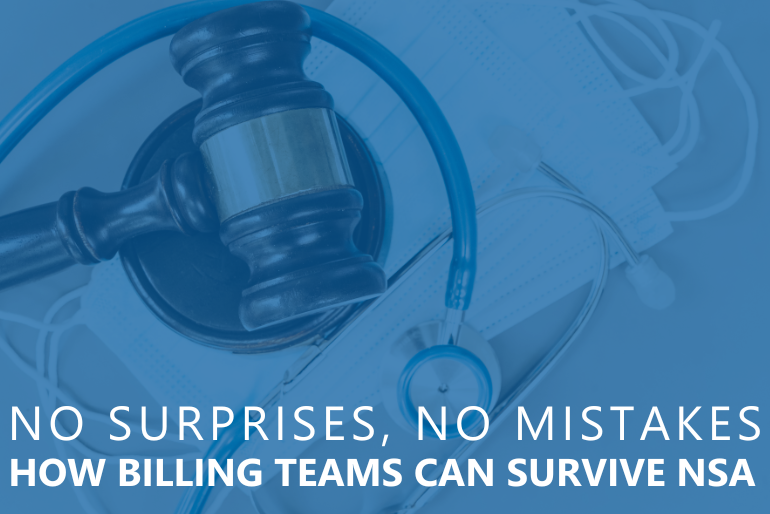Health systems, provider practices, and medical billing companies are facing tremendous challenges, including staffing (58%), expenses (20%), revenue (17%), technology (2%), and other (2%) as revealed by a recent MGMA Stat report, “Healthcare in 2023: Staffing is still the biggest challenge for practices as financial worries grow.”
Optimizing medical billing processes is key to creating and scaling a successful practice, a challenge that stays top of mind for many billing and revenue cycle leadership teams. To identify areas of improvement, tracking key performance indicators (KPIs) sheds light on performance, areas of improvement, revenue, and more. The following eight KPIs can empower your organization, delivering an accurate practice overview and improving your overall revenue cycle; however, there are many more to consider tracking – check out a full list of operational and billing/RCM KPIs to keep an eye on that the Medical Group Management Association (MGMA) highlighted for 2023.
Learn how ImagineSoftware’s real-time reporting and customizable dashboards can help measure and improve your practice’s performance.
The Road Back to 100% – Leveraging real-time reporting and automation functionality
Daily/Weekly versus Monthly KPIs
Measuring and analyzing performance is completed both on a daily and monthly basis to view day-to-day performance versus overarching trends. Comparing both sets of analytics provides medical billing teams with the tools to remain agile and make data-driven decisions.
Daily and Weekly KPIs
- Cash Receipts: Revenue is the driving force of your business, so money that’s collected and deposited should be monitored daily. Cash can’t be benchmarked, but you can compare it to a previous period to ensure that cash flow is steady or improving. Keep in mind that this KPI can fluctuate greatly depending on things like the addition of new employees, new services, cancelled appointments and procedures and how quickly patients pay for their medical bills.
- Charges: This KPI should be monitored closely in conjunction with cash receipts. Because charges drive revenue, any fluctuation in charges will cause a fluctuation in cash. Divide total charges by 365 days to calculate your average daily charge amount.
- Payables: Knowing when your unpaid invoices are due and whether or not your practice has the cash to cover them in a timely manner is critical. The more you can track and improve your payables, the more lenient your vendor credit terms may be, which can save your practice a lot of money. Also, by monitoring this KPI, you can increase accounts payable process transparency and accountability among A/P staff.
The number of days it takes you to collect payments due to your practice. The calculation for DRO is:
Total Receivables + Credit Balances
Average Daily Charge
This KPI indicates the average number of days between when services were provided and when they were paid for. High-performing billing departments typically have a DRO of 30 days or less, whereas an average department can be 40-50 days, and anything over 60 days can indicate below average performance. By analyzing back-end processes, such as eliminating duplicate billing, avoiding incorrect CPT codes and modifiers, as well as double-checking patient information accuracy for claim denial prevention, you can reduce your DRO significantly. Additionally, offering online patient payment portals and payment plans makes it easier for patients to pay their medical bills conveniently while also improving patient retention rates.
Receivables Outstanding Over 120 Days
This helps pinpoint claim denial timeliness issues and effectiveness of follow up on no-response claims. The calculation is:
Total A/R over 120 Days
Total A/R
This KPI measures how quickly patients and insurers are paying their bills. A realistic target should be less than twelve percent by both patients (taking into consideration eligibility verification, payment methods understanding their insurance benefits) and insurer (to ascertain whether in-house or outsourced billing staff are tracking reimbursement/denials properly).
Denial Rate
The Denial rate KPI tracks the percentage of denied claims and provides insight into how efficiently your claims process is operating. You can calculate your denial rate with the following:
Total Number of Claims Denied
Total Number of Claims Remitted
Denied claims can cost healthcare organizations up to five percent of net revenue streams—not including the approximate $25 per denial management fee—so monitoring this rate is important for a healthy business. Calculate this percentage by taking all denied claims divided by total claims submitted; an ideal rate would be under five percent, but the industry average is 5-10%. Streamlining manual claims management processes with automated technology like scrubbing software and electronic remittances can help reduce denials significantly.
The industry average denial rate is 5-10 percent, although under five is ideal. To improve your practice’s number, consider how much of your claims management process is manual. You can accelerate your collections performance with claims scrubbing, electronic remittance and auto coding/charge posting.
Resolve Rate
This is a great reflection of the overall effectiveness of your revenue cycle management (RCM) process, from eligibility to coding and billing. The calculation for resolve rate is:
Total Number of Claims Paid for a Given Time Period
Total Number of Claims for a Given Time Period
This KPI tracks how successful your organization’s revenue cycle management process is from start to finish—from eligibility to coding/billing. Determine this rate by dividing resolved accounts receivable by total accounts receivable; the higher the percentage the better! If yours is low, consider using automation tools where possible such as automated eligibility verification systems or auto coding/charge posting software solutions.
Cash Collection Percentage
This medical billing performance metric is designed to evaluate a provider’s ability to transfer net patient services revenue to cash. You can develop this KPI with this calculation:
Total Collected Patient Service Cash
Average Monthly Net Patient Service Revenue
Evaluating how effectively a healthcare provider converts net patient services revenue into cash is essential—this metric measures just that! Calculate this number by dividing collected cash over total monthly net revenues excluding any payments from Medicare pass-throughs or Medicaid DSH settlements. Your collection goal should be at least one hundred percent within three months–any lower can indicate issues with eligibility verifications or authorizations/credentialing steps in your RCM process that must be addressed quickly in order to maximize collections potential.
It costs approximately $25 per claim in reworking medical claim denials, making it even more important to have tracking and analyzing systems in place – such as Business Intelligence Reporting software. KPIs are accurately integrated and interpreted within ImagineSoftware’s reporting tools, enabling practices to improve workflow efficiency, financial performance, and making informed decisions; ultimately optimizing revenue cycles within meaningful timeframes.




